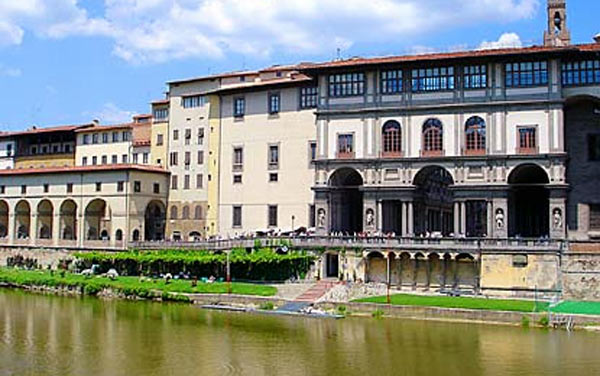Mass grave discovered under Uffizi Gallery in Florence
Dozens of ancient skeletons in a mass grave were found during excavation work to expand an exhibition space in the Uffizi Gallery in Florence. Archaeologists believe the grave dates back somewhere between the 4 th and 6 th century AD and may be the result of the plague or another epidemic that swept through Florence during that era.
Over a period of five months, researchers dug up a total of sixty well-preserved skeletons from an ancient cemetery that appears to have been prepared in a hurry. The fact that the bodies were laid closely together, side-by-side and at roughly the same time indicates that this is a mass grave.
Archaeologists were not able to find any obvious signs of death, such as evidence of injury or malnutrition, in any of the remains, which suggests the individuals may have been victims of a plague. Archaeologist Andrea Pessina says DNA testing will aim to find evidence of what "certainly was an extremely lethal epidemic," possibly the plague.
The Plague of Justinian was an epidemic that afflicted the Eastern Roman Empire in the 6 th century and has been called one of the greatest plagues in history. Modern scholars believe that the plague killed up to 5,000 people per day in Constantinople at the peak of the pandemic. The initial plague ultimately killed perhaps 40% of the city's inhabitants and caused the deaths of up to a quarter of the human population of the eastern Mediterranean. One high estimate is that the Plague of Justinian killed as many as 25 million people across the world.
In the views of some 6th-century Western historians, the plague epidemic was nearly worldwide in scope, striking central and south Asia; North Africa and Arabia; and Europe all the way to Denmark and Ireland. Genetic studies point to China as having been the primary source of the contagion.
Throughout the Mediterranean basin, until about 750, the plague returned in each generation. The waves of disease had a major effect on the future course of European history. Modern historians named this plague incident after the Eastern Roman Emperor Justinian I, who was in power at the time of the initial outbreak; he contracted the disease himself yet survived. After the last recurrence in 750, major epidemic diseases did not appear again in Europe until the Black Death of the 14th century
The entire operation involving the excavation of the remains in Uffizi and the analysis of the skeletons is being filmed in 3D for future museum exhibitions.




















Comments
I have read theories that the watery area of venice was caused by man, diliberate or not. The theory was put out there that the canals were done to habdle some flooding and to give Venice and parts of Florence to draw people and culture to that area of Italy.